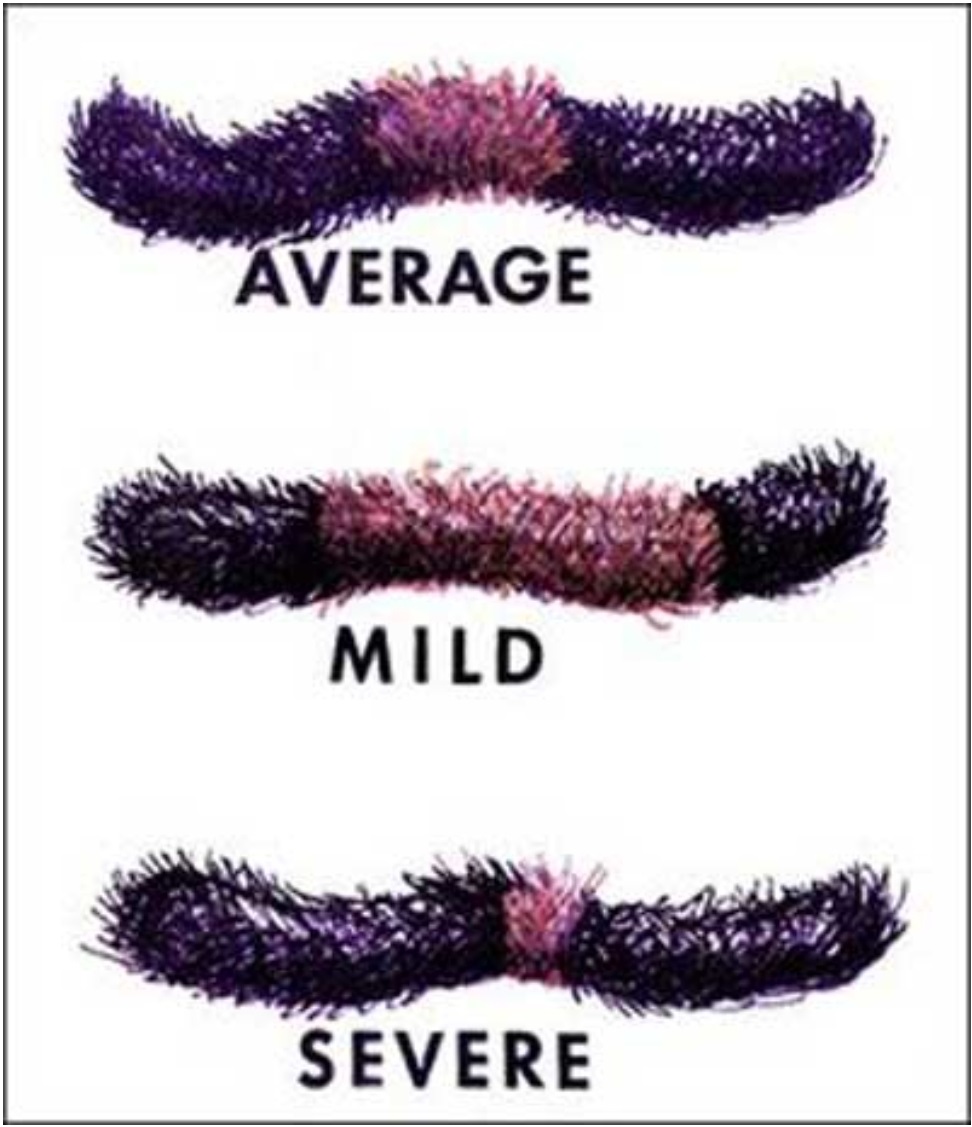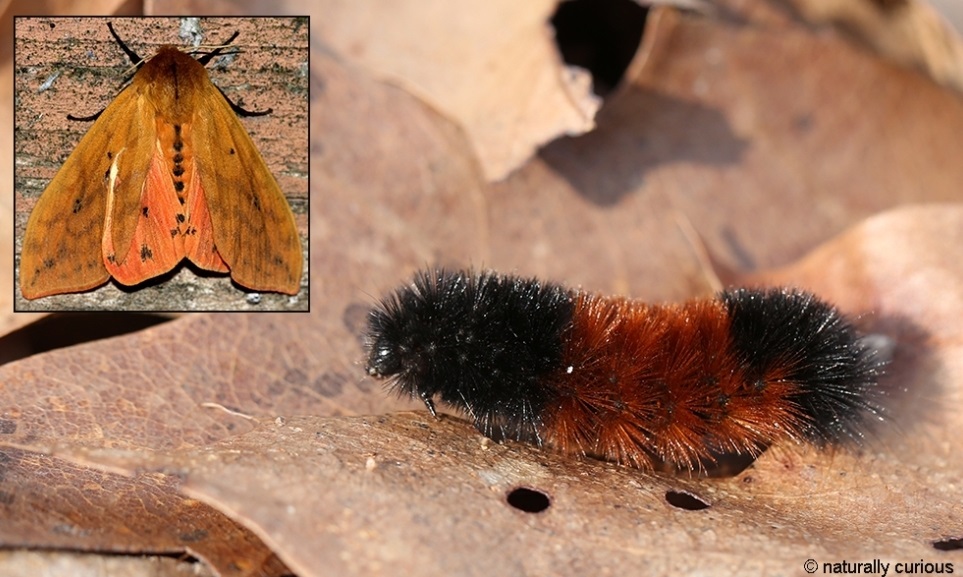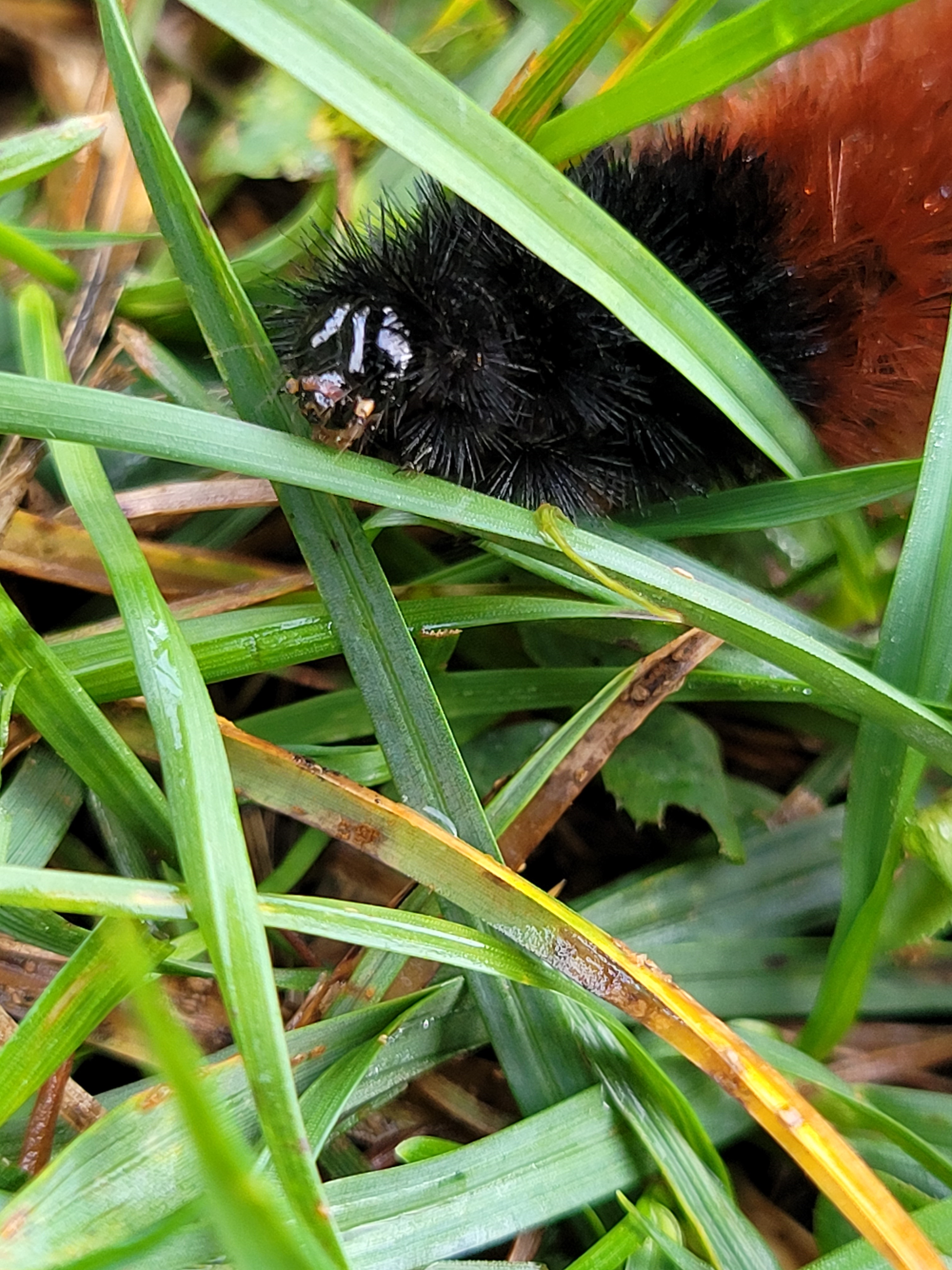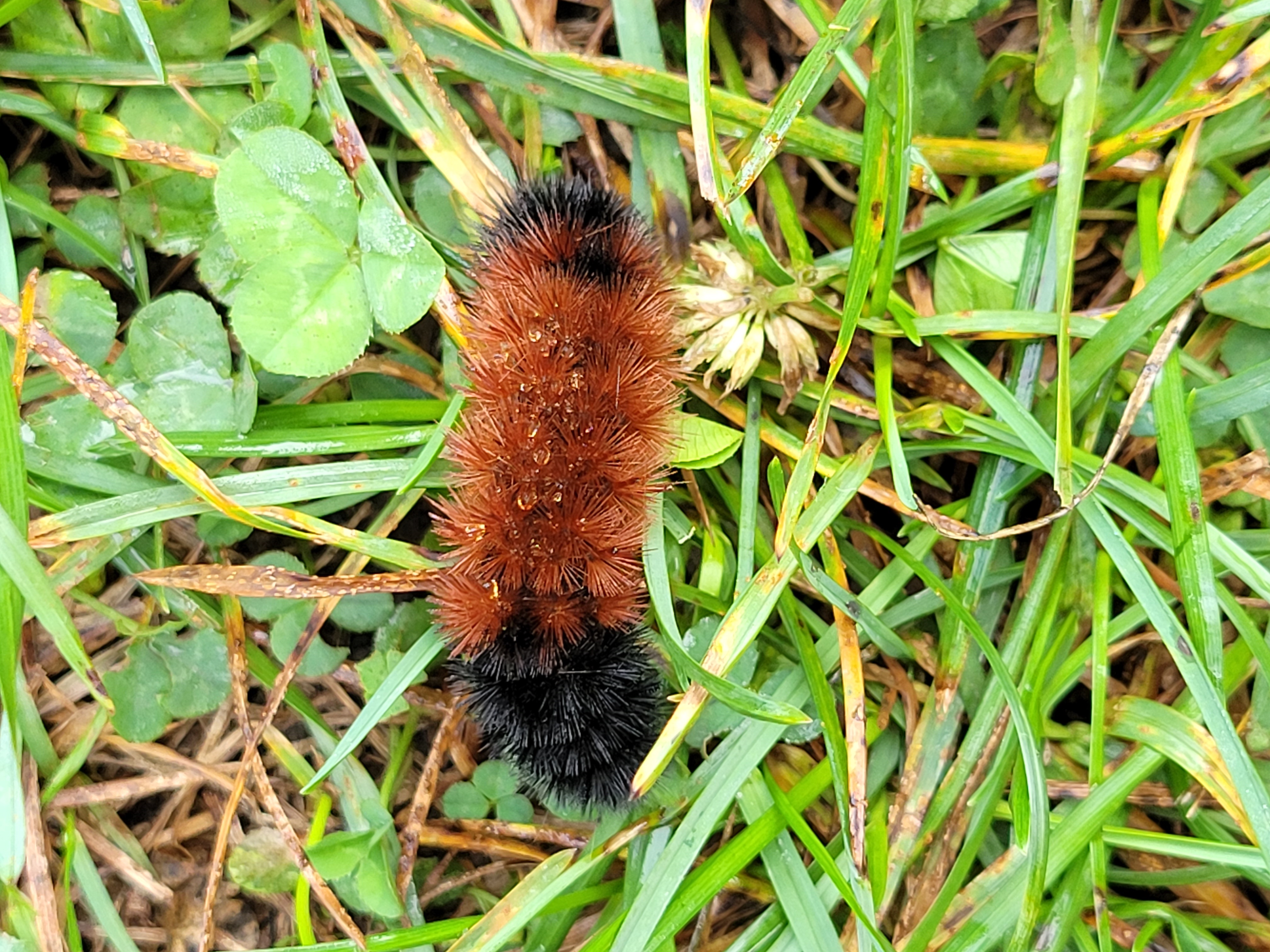by Kelsey King
Isabella tiger moth (Pyrrharctia isabella), also known as the woolly bear caterpillar, is found all across the United States and Southern Canada. Like most caterpillars, they are herbivores. You can find them later in the Fall munching on plants preparing for their hibernation under the leaves in the forest. A lot of times, you’ll see them crawling across the lawn or the road. These caterpillars not only play a role in the ecosystem but in our lives, too. The woolly bear has 13 body segments and there are 13 weeks of winter. This may be why some people believe that these caterpillars are weather predictors.
I’m sure most of you are aware of the woolly bear legend. No? Well, according to folklore, this little caterpillar can tell us the weather, and more importantly, how harsh the winter will be. Here’s how:
When you look at a woolly bear, you’ll notice its distinct color pattern; black, brown, black. The longer the black bands, the longer, colder, and snowy it will be. The wider the brown middle band is, the milder the winter will be. If its head has the longer black band, then the beginning of winter will be more severe. If the end has the longer black band, then the end of winter will be harsh.
Are these woolly bears true weather forecasters? Fortunately or sadly, depending on your love or hate for the cold weather, the answer is no. The caterpillar’s colors are actually based on how long it has been feeding, its age, and species. There are 260 species of tiger moths in the United States. The caterpillar molts, or sheds its skin, six times before it becomes an adult moth. As it molts, the more brown and less black you’ll see. Whichever woolly bear colors you find, I hope the winter weather is in your favor!





